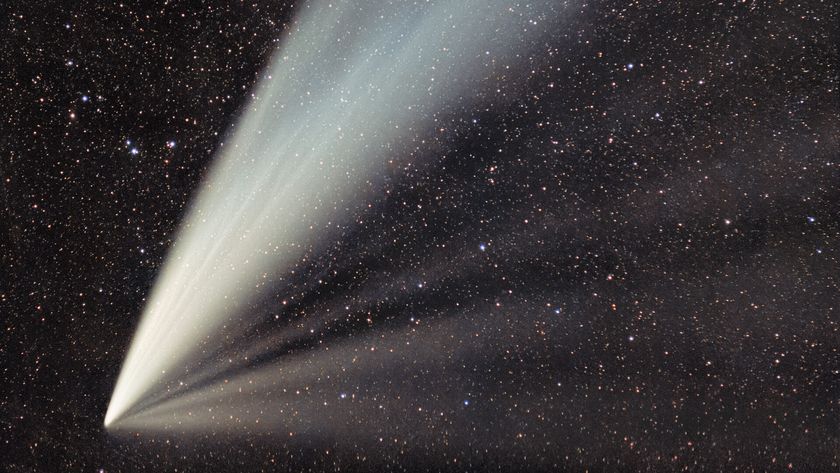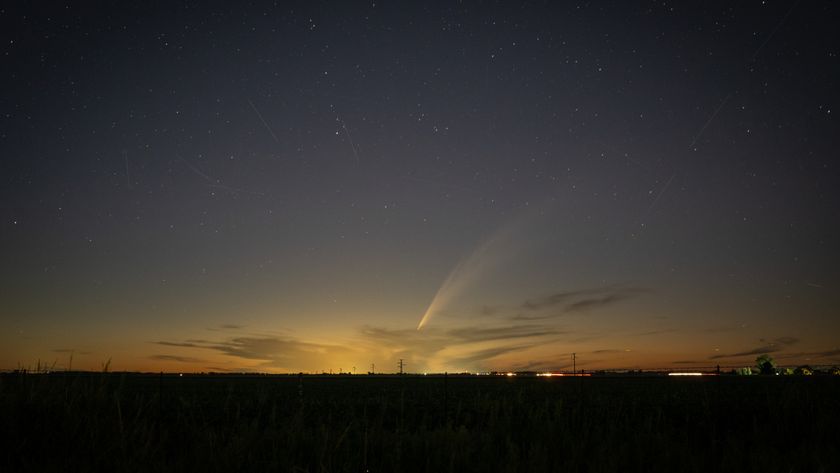
NASA's Planet-Hunter Caught Stunning Video of a Distant Comet
For 17 hours on July 25, TESS captured footage of comet C/2018 N1 transiting past the southern constellation Piscis Austrinus. The comet, which is 29 million miles (46 million kilometers) from Earth, drifts from right to left across a backdrop of stars. Its tail, gasses blown from the comet's surface by solar wind, shifts as the comet moves, turning slightly as it follows the hidden radioactive breeze.
The clip also represent's an early look at NASA's processing of images from the new satellite. The stars in the clip appear white and black against a gray field, and seem to jiggle. That strange appearance, NASA said, is the result of processing designed to highlight changes in starlight, which scientists can use to hunt for telltale signs of exoplanets. This video comes from a small segment of what TESS can see as it scans the whole sky, the agency said.
TESS's video of the comet is fascinating, but as TESS dumps more stellar data down to Earth every 13.5 days (which is how often its orbit carries it closest to Earth) scientists will have the opportunity to learn about objects much farther away.
Originally published on Live Science.
Sign up for the Live Science daily newsletter now
Get the world’s most fascinating discoveries delivered straight to your inbox.












